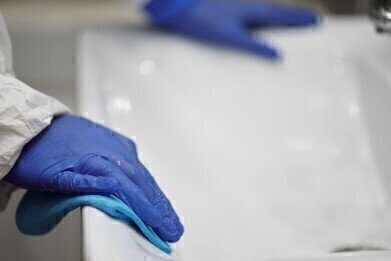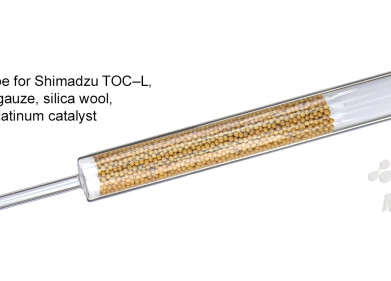Laboratory Products
What's the Best Way to Clean Laboratory Surfaces?
Aug 23 2022
From pathology testing to drug research and development, hygiene should be a priority at all laboratories. Cleaning and disinfecting surfaces is particularly important as these areas can be breeding grounds for bacteria, viruses and other contaminants. So, what’s the best way to clean laboratory surfaces such as benchtops, handles, instrument knobs and computer keyboards?
Bust pathogens with chemical germicides
Many laboratories rely on chemical germicides to clean and decontaminate surfaces. These chemical solutions come in different strengths - low, intermediate and high. Intermediate chemical germicides are the most common and generally contain 10% sodium hypochlorite or bleach. This level of chemical germicide is capable of killing most bacteria. To kill endospores, vegetative cells, mycobacteria and certain types of viruses it’s important to upgrade to high level chemical germicides such as glutaraldehyde-based formulas.
Commercial cleaning products can be a good way to eliminate bacteria and other contaminants, though instructions must be followed carefully. Solutions don’t always act immediately, and the product may need to be left on the surface for a certain amount of time to achieve the best possible results.
Why clean lab surfaces?
Now we know more about how to clean laboratory surfaces, let’s take a closer look at why gold-standard protocols are so important.
Supports staff safety
Cleaning laboratory surfaces helps keep staff safe and prevent workplace injuries. For example, leaving a corrosive chemical spill on benchtop could accidently burn the hands of the next staff member that uses the space. Properly cleaning lab surfaces also prevents the spread of pathogens in laboratories. As demonstrated by the COVID-19 pandemic, infectious bacteria and viruses can survive on hard surfaces for long periods of time. This means pathogens can quickly spread in laboratory environments, where personnel are often touching the same surfaces and sharing equipment. Good cleaning practices help minimise the risk of infections and keep staff safe.
This is particularly important in clinical and biomedical labs, where staff are exposed to high-risk pathogens. The Biosafety in Microbiological and Biomedical Laboratories document published by the Centres for Disease Control and Prevention highlights the importance of good surface cleaning practices in scientific facilities:
“For example, one report of occupational exposures associated with Brucella melitensis, an organism capable of transmission by the aerosol route, described how a staff member in a clinical microbiology laboratory accidentally sub-cultured B. melitensis on the open bench,” reads the document. “This error and a breach in containment practices resulted in eight LAIs with B. melitensis among 26 laboratory members - an attack rate of 31%.”
Prevents cross-contamination
Cross-contamination is a major concern in all laboratories and can affect the accuracy and reliability of results. Good laboratory surface cleaning protocols minimise the risk of cross-contamination.
Improves workflows
Laboratory personnel work more efficiently in spaces that are neat, organised and clean. Having clear-cut surface cleaning guidelines in place can help improve workflows.
Extends the lifespan of surfaces
From corrosive chemicals to rust accelerants, contaminants can quickly damage and degrade laboratory surfaces. Effective cleaning practices help extend the lifespan of surfaces in the lab.
Good surface cleaning protocols is one of many ways to improve lab hygiene. Find out more about best practice methods, including general housekeeping rules that can be adopted at most facilities, in ‘Laboratory Hygiene - A Comprehensive Guide’. Or read 'Why failing to decontaminate your glassware could be devastating for your research' to discover the importance of cleaning in the lab.
Digital Edition
Lab Asia 31.2 April 2024
April 2024
In This Edition Chromatography Articles - Approaches to troubleshooting an SPE method for the analysis of oligonucleotides (pt i) - High-precision liquid flow processes demand full fluidic c...
View all digital editions
Events
Apr 22 2024 Marrakech, Morroco
Making Pharmaceuticals Exhibition & Conference
Apr 23 2024 Coventry, UK
Apr 23 2024 Kintex, South Korea
Apr 23 2024 Seoul, South Korea
Apr 24 2024 Jakarta, Indonesia

.jpg)











.jpg)




